How to grow Jacobinia
Jacobinia goes by a few different names, the main alternative being Justicia. There are a range of species, but for the purposes of this growing guide we shall focus on the popularly grown Jacobinia pauciflora, also known as Justicia floribunda or Brazilian fuchsia. While the Brazilian part of the name is accurate, the plant is no relation to fuchsia (it belongs to the acanthus family), though with its bright, tubular flowers the comparison is understandable.
A dwarf, rounded, subtropical shrub, J. pauciflora is often grown as a conservatory plant in the UK, or moved outdoors for the warmer months only. Perhaps its greatest attribute is its potential to flower from autumn through to late spring. Covered in nodding spikes of yellow and scarlet flowers, few other plants offer such a colourful display during the winter months.

Zantedeschia is a genus of flowering plants from the family Araceae and is native to southern Africa. With a rich history dating back to the Ancient Romans, these deciduous or semi-evergreen perennials have been used as a symbol of celebration. Zantedeschia was Named after Professor Giovanni Zantedeschia, an Italian botanist.
There are two main forms of Zantedeschia: hardy and tender. Hardy forms of the plant can be grown outdoors, enjoy moist soil and full sun or partially shaded conditions - these are known as Arum lilies. Tender forms of Zantedeschia prefer being grown in containers or pots and should be brought inside over the winter - these are known as Calla lilies.
With tuberous flora in all colours from whites, yellows and oranges to deep reds and purples, Zantedeschias are not to be overlooked in any garden, as long as they have sufficient sunlight to grow in.
Ready to learn more about growing Zantedeschia? Read on for all there is to know...

Key Information
Soil pH
Position
Hardiness

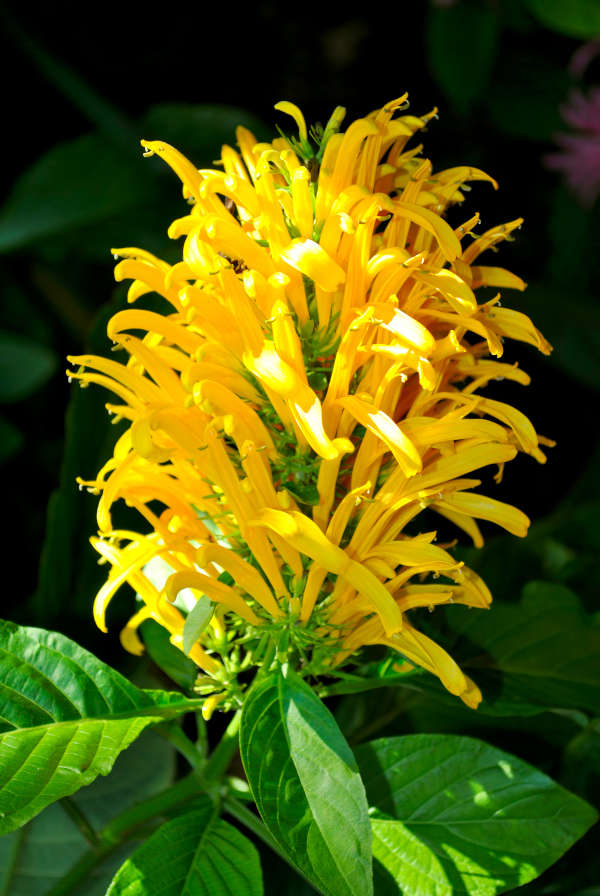
Where & when to plant Jacobinia
Position - Indoors: bright, filtered light or full light with shade from the midday sun. Many other species need high humidity levels, but this isn’t a concern for Jacobinia pauciflora. All it asks is to be kept out of draughts. Outdoors: partial shade.
Soil - Container: a loam-based potting compost such as John Innes 2 or 3. Open ground: fertile, moist, well-drained.
Flowering Period - Autumn to late spring
Hardiness - Subtropical, rated H1B. Generally, this means a minimum temperature of between 10-15°, though this species is known to be fine to 7°C.
Jacobinia hails from warmer climes than ours and tends to be grown as an indoor or conservatory plant. Always, the best time of year for potting these up is spring.
While its main season of interest falls during the winter months, you may wish to move your jacobinia outdoors for summer – both to enjoy its rounded, evergreen form and to boost the health of the plant (time spent outdoors staves off many indoor pests and diseases). Move out once all risk of frost has passed and minimum nighttime temperatures remain above 7°C – this varies from region to region, though tends to be May/ June.
An important thing to note with tender and subtropical plants is the need to gradually ‘harden off’, rather than suddenly move them outside. This slow toughening up reduces the chances of the plant going into ‘shock’, which can severely check growth.
The easiest way to do this is by using a cold frame opened in gradual increments over the course of a week or two. Keep the lid closed at night until the last couple of days of the hardening off period.
If you don’t have a cold frame, a bit of horticultural fleece combined with a spot of ‘musical pots’ works just as well. A couple of weeks before you anticipate planting your jacobinia out, wrap it in a couple of layers of fleece and place outside during the day, moving back into a warm, protected environment at night. Do this for a few days then reduce the fleece to one layer. After a few more days like this, remove the fleece completely. If it’s warm enough you can leave outside at night too, though reapply the fleece. After a few more days like this, your jacobinia is ready to be left out uncovered full time.
When it comes to choosing a spot, jacobinia is ideal for a conservatory, heated greenhouse, or warm windowsill. Outside, keep it on a patio or balcony, or perhaps as the central focal point of a garden table.
How to plant Jacobinia
- For planting in containers, first choose an appropriately sized pot just a few centimetres larger than the rootball. Ensure there are plenty of drainage holes in the bottom.
- If you are using a heavy pot, it can be a good idea to fill and plant it in situ to save yourself the trouble of moving once full.
- Use a loam-based compost if you can (or any good quality potting compost) with a little horticultural grit mixed in and, if not already present (check the labelling on the bag), some slow-release fertiliser granules.
- Start by partially filling the pot with compost; enough so that when placed on it the upper surface of the root ball is about 3cm lower than the top of the pot.
- Fill around the plant with compost, firming down with your fingers then adding a little more so it is held tight.
- Pick up the container (if you can!) and lightly tap on the potting bench or ground a few times to help further settle the compost around the plant.
- Soak well with water.
- A mulch with horticultural grit will look attractive and help to prevent a ‘cap’ or crust forming on the top of the compost (something container plants can suffer due to the artificial nature of their watering).
Jacobinia isn’t suitable for planting in the open ground here in the UK as it needs to be moved indoors each year for winter protection. However, if you are lucky enough to have a heated glasshouse with an open bed, plant as follows:
- Dig the soil area removing any weeds and breaking up any lumps. Mix in some organic matter such as manure or garden compost. Rake level and firm with your heels. Rake level again.
- Water plants well and allow to drain before planting.
- Dig a hole twice the size of the root-ball.
- Place the plant in the hole, ensuring the top of the root ball sits level with the surface of the soil. Too low and the plant may rot, too high and the roots can dry out.
- Backfill with soil and firm in gently with your foot.
- Soak well with water.
- Mulch around the base with well-rotted organic matter.
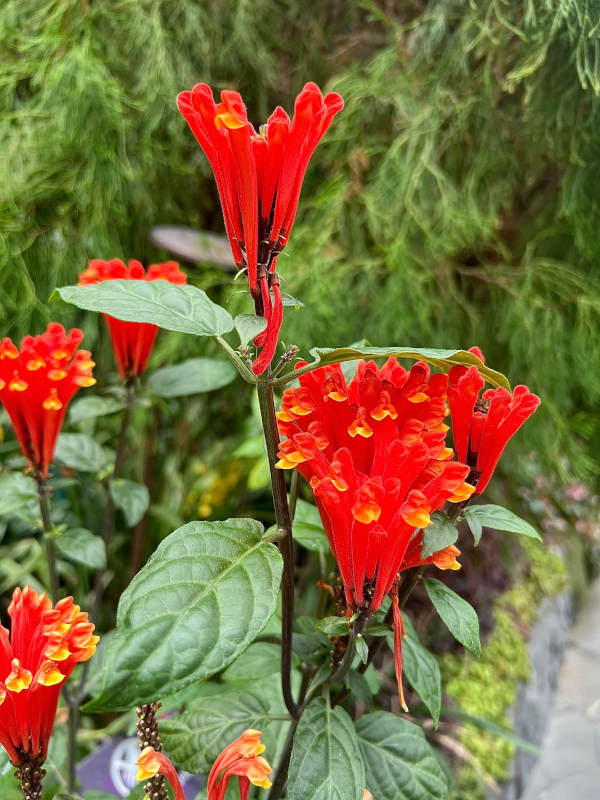
What to plant with Jacobinia
Combine with conservatory plants which bloom during the summer months when jacobinia is ‘off duty’. We love plumbago, dipladenia, abutilon, and brugmansia.
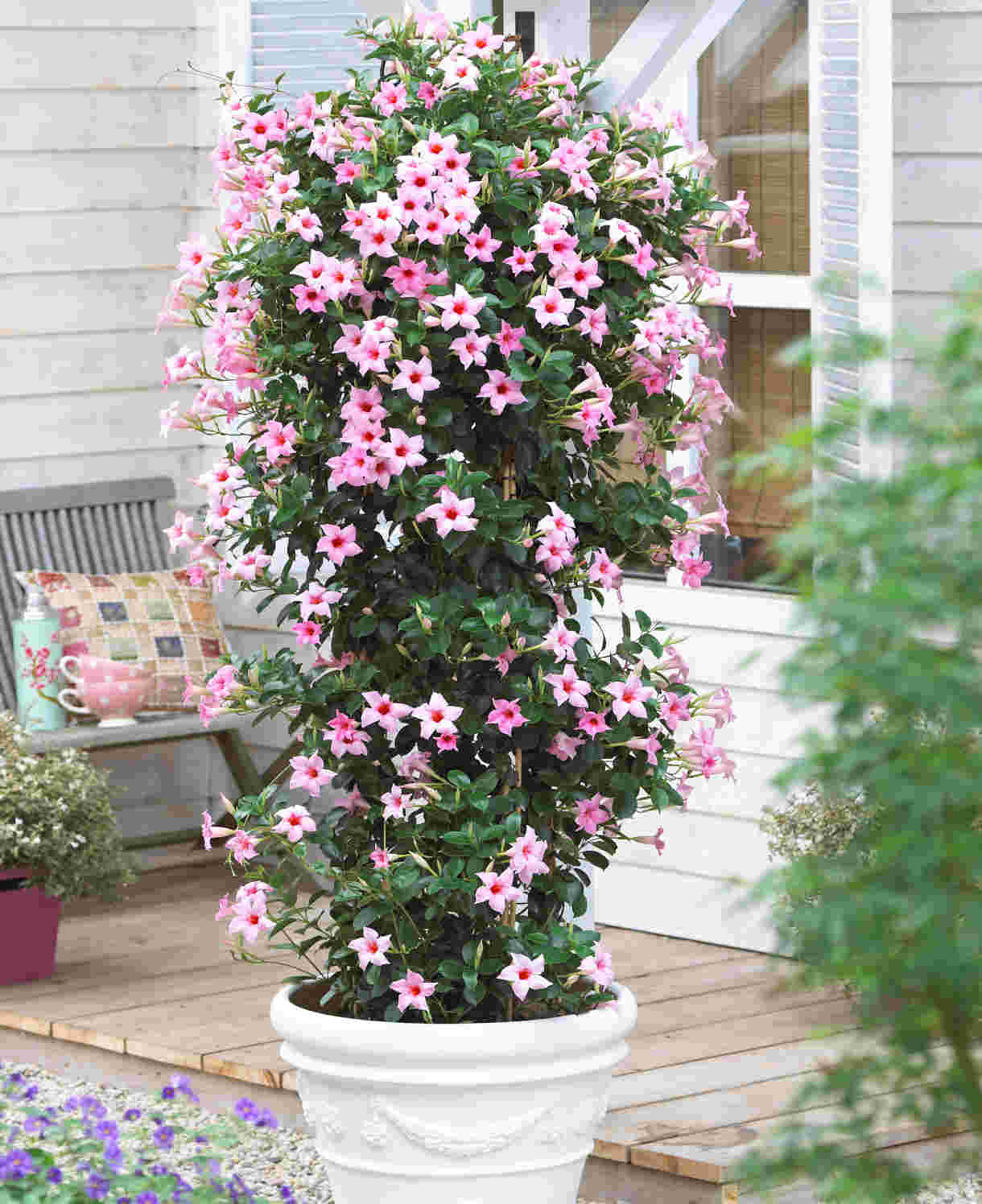
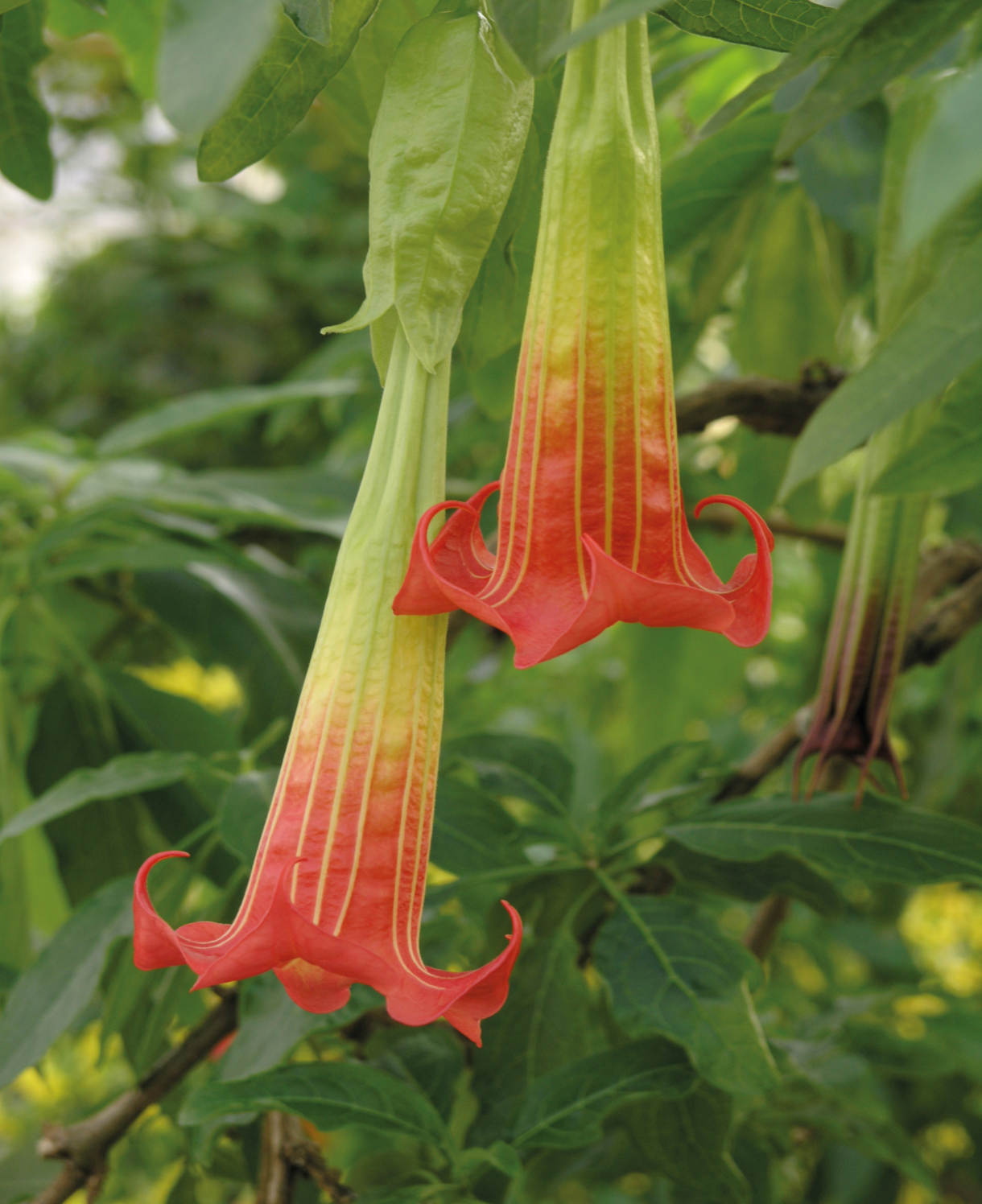
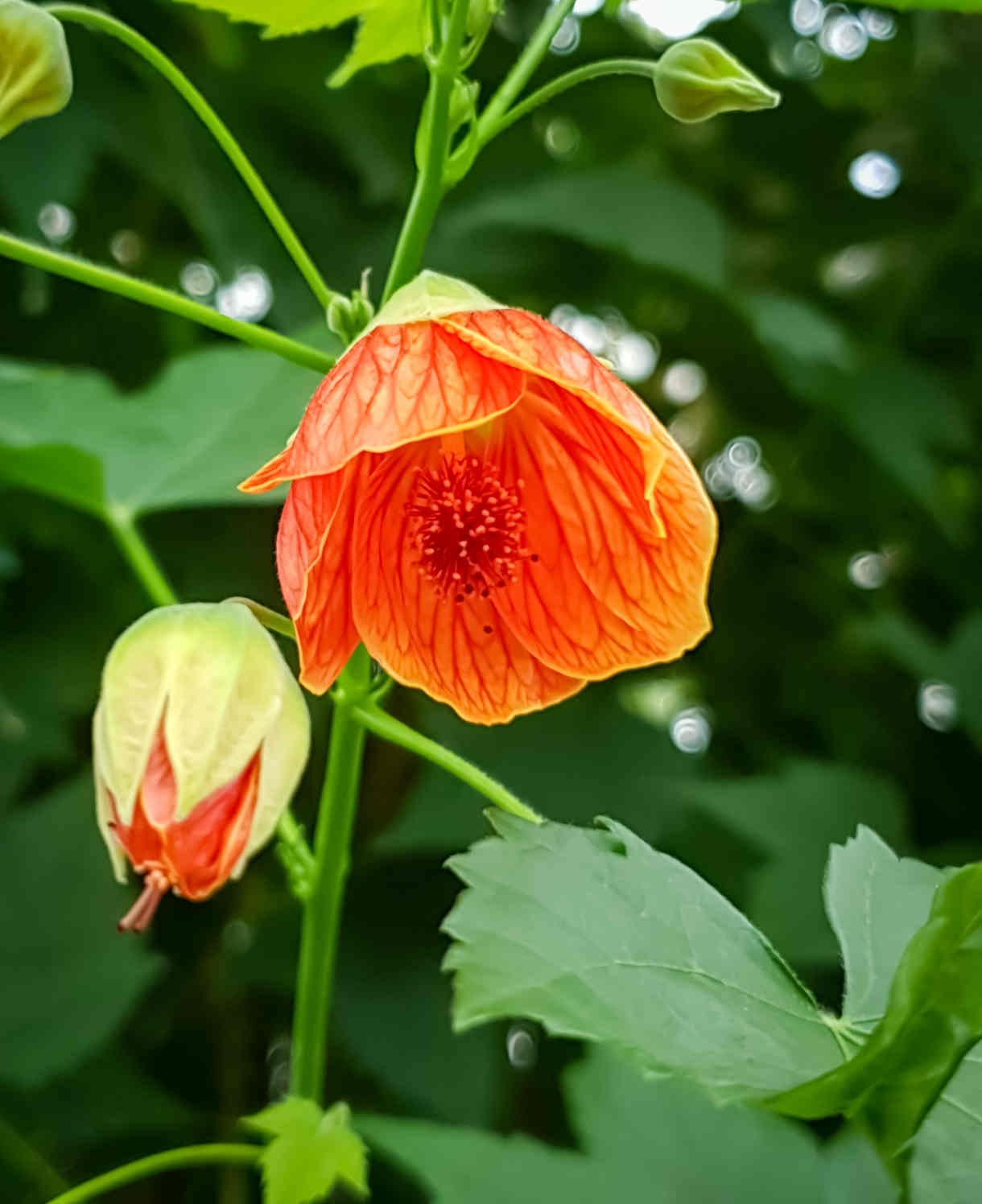
How to care for Jacobinia
Pruning and Deadheading
Jacobinia is RHS pruning group 9. This means it needs little to no pruning other than pinching out the growing tips when young. Do this in spring, nipping back to a lower pair of buds. After this, jacobinia is usually best left alone other than the occasional removal of any unsightly branches which may be spoiling its overall shape. The exception to this is if it is grown in a heated, indoor environment all year round and consequently becomes too large for the allotted space. In this case, a hard, restrictive prune can be done in late winter/ early spring.
After a few years jacobinia can become leggy, and at this point is best replaced. See ‘How to propagate jacobinia’ below for growing your own new plants.
Watering
Water jacobinia freely when in growth. Scale back in the winter months to just enough to prevent the compost or soil drying out entirely.
Feeding
To get the most out of container-grown jacobinia, regular feeding is a must. Get off to a flying start by using a good quality compost with slow-release fertiliser granules mixed in. These generally provide enough nutrients for around six weeks, after which an application of balanced liquid feed every four weeks is recommended. It is also important to repot into a slightly larger container every couple of years, using fresh compost again with slow-release granules mixed in. In the intervening years a ‘topdress’ is advised. Scrape away the top few centimetres and replace with fresh.
In an open glasshouse bed, mulch immediately after planting with well-rotted organic matter, i.e., a layer of manure or garden compost applied to the soil around the plant. As well as boosting the nutrient content of the soil, this has the added benefit of suppressing weeds and locking in moisture. Repeated each spring, this should provide sufficient nutrients for your jacobinia.
Cold Protection
- pauciflora is likely to struggle below 7°C. Either keep indoors all year round, or between the months of September and June. A heated conservatory, windowsill, or glasshouse are all ideal.
Pests and Diseases
Like most plants, jacobinia can be affected by the usual issues of spider mite and whitefly when permanently grown indoors. Keeping houseplants as healthy as possible is the key to warding off problems, and by this we mean proper ventilation, adequately spaced plants (for good air flow), keeping everything well-watered and fed, and repotting into larger containers when necessary. Thoroughly cleaning the indoor environment every winter can also help to remove overwintering populations of pests.
Where infestations do take hold, try introducing biological controls (often sachets or tubes containing miniscule natural predators), or in the worst cases, remove the affected plant/s altogether.
How to propagate Jacobinia
Jacobinia is best propagated by cuttings in spring or summer, ideally with bottom heat:
- In the morning (plants are more turgid at this time and less likely to wilt during the process), take 10cm cuttings of healthy non-flowering shoots. Snip off just above a bud using sharp, clean secateurs.
- Place in a clean plastic bag in which to transport the cuttings back to a potting bench or garden table.
- Fill a container with a well-draining compost mix.
- Trim the end of the cutting to just below a node (point at which leaves grow).
- Remove the lowest third of the leaves.
- Insert the cuttings into the compost and water lightly. Several cuttings can be put in the same container if there is enough space to do this without them touching.
- Place in a propagating unit with bottom heat if you have one, or covered with a plastic bag on a warm windowsill if not (out of direct sunlight). If using a plastic bag, remove it a couple of times a week for around ten minutes. This will ensure the cuttings remain well-ventilated and don’t rot.
- Keep the cuttings misted and occasionally watered until they root. You will know this has happened when roots emerge out of the bottom of the container.
- Gently remove rooted cuttings and pot them into individual pots. Grow on in a protected environment such as a conservatory, greenhouse, or that windowsill again, before potting on or planting as above.
* Many plants carry Plant Breeders Rights and cannot be propagated for commercial purposes.
Common Jacobinia questions
How large does Jacobinia pauciflora get?
This is a small shrub which rarely grows larger than 60 x 60 centimetres.
The leaves on my Jacobinia pauciflora seem to vary in size. Is this normal?
Yes – a distinguishing feature of this species is the fact that one of each pair of leaves is always smaller than the other.
What is ‘bright filtered light’?
Sometimes also referred to as ‘indirect light’, this can be achieved by locating the plant in a bright south or west-facing room, somewhere other than in the window. This means it will receive high light levels whilst not being in direct sun. For example; in a spot which only receives direct sunlight in the morning or evening, avoiding the harsh midday sun; in direct sun with shading provided. A piece of greenhouse shade netting or a net curtain both work well.





